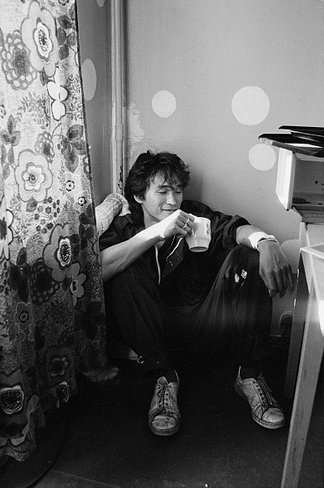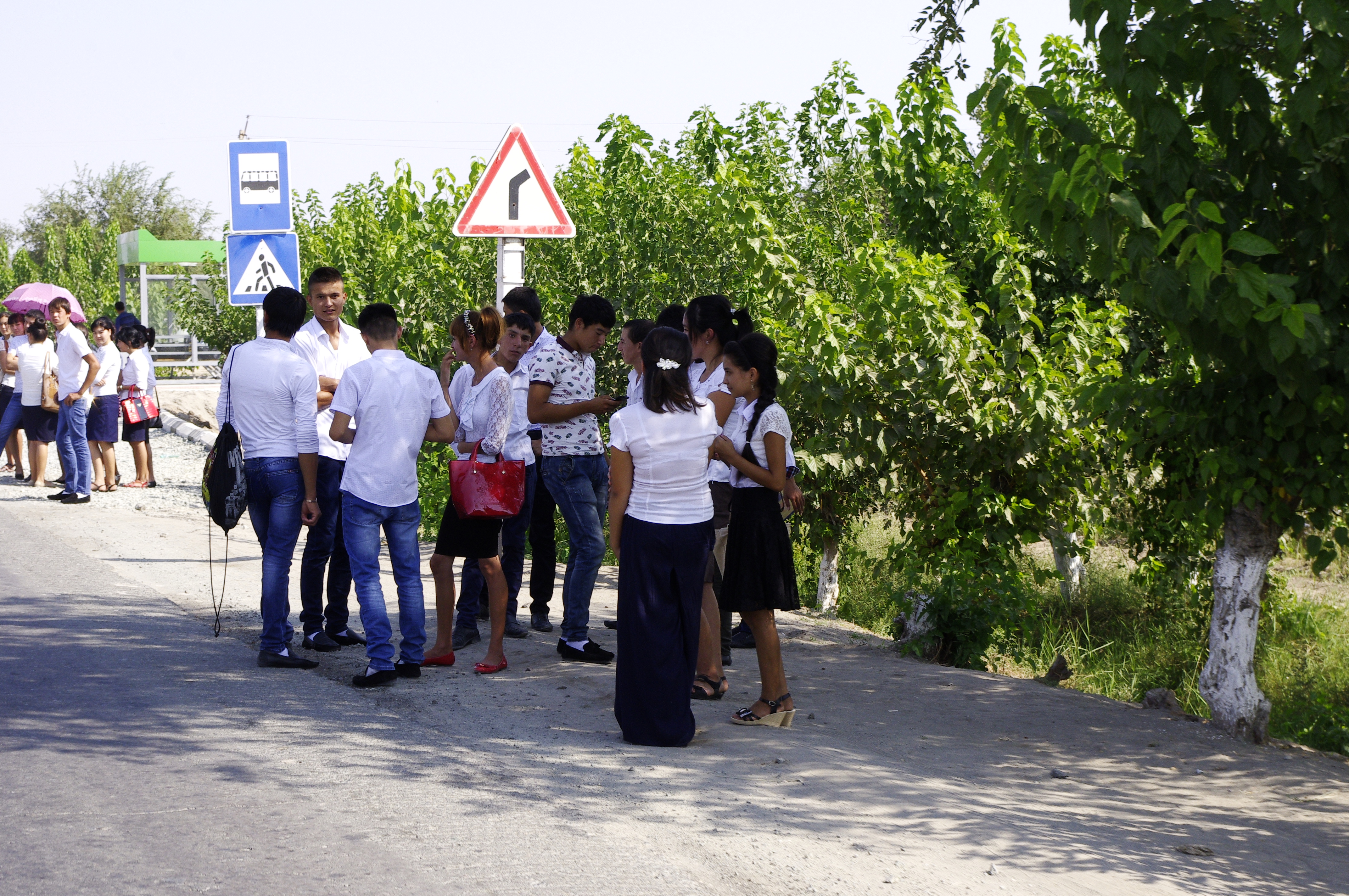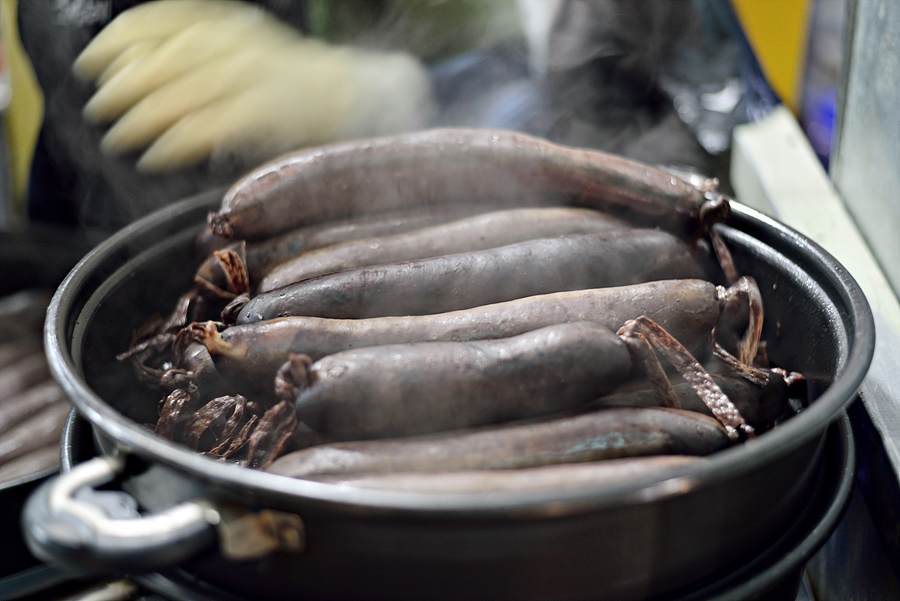|
Cafe Lily
Cafe Lily is a Korean Uzbeki restaurant in the Bensonhurst neighborhood of Brooklyn in New York City, New York, United States. It opened in 2015. The restaurant serves Uzbek, Koryo-saram cuisine, and Russian cuisine. Description For Uzbek cuisine, dishes like ''manti'', kebabs, and ''plov'' (pilaf) are served. For Koryo-saram cuisine, dishes like ''morkovcha'' (a Koryo-saram carrot-based variant of kimchi), '' kuksu'' (loosely similar to ''janchi-guksu''), and ''u-kadya'' are served. There is also ''khe'' (based on '' hoe'', similar to ''sashimi''), '' begodya'' (similar to '' jjinbbangmandu'', dumplings), and ''sundya'' (similar to ''sundae'', blood sausages). Background The restaurant is run by Uzbekistanis from a population of Koreans from the former Soviet Union called Koryo-saram. Chef Lilia Tyan grew up in Tashkent Tashkent (), also known as Toshkent, is the Capital city, capital and List of cities in Uzbekistan, largest city of Uzbekistan. It is the most po ... [...More Info...] [...Related Items...] OR: [Wikipedia] [Google] [Baidu] |
Brooklyn
Brooklyn is a Boroughs of New York City, borough of New York City located at the westernmost end of Long Island in the New York (state), State of New York. Formerly an independent city, the borough is coextensive with Kings County, one of twelve original counties established under English rule in 1683 in what was then the Province of New York. As of the 2020 United States census, the population stood at 2,736,074, making it the most populous of the five boroughs of New York City, and the most populous Administrative divisions of New York (state)#County, county in the state.Table 2: Population, Land Area, and Population Density by County, New York State - 2020 New York State Department of Health. Accessed January 2, 2024. [...More Info...] [...Related Items...] OR: [Wikipedia] [Google] [Baidu] |
Begodya
''Begodya'' () is a dish in Koryo-saram cuisine: cuisine of ethnic Koreans of the mainland former Soviet Union, especially in Central Asia. It has been compared to the Korean steamed bun ''jjinppang''. They can be filled with various meats and cabbage. The dish is a popular menu item at Cafe Lily, an Uzbek-Korean restaurant, located in Brooklyn, New York City. See also * ''Bungeo-ppang'' * ''Hoppang ''Hoppang'' () is a warm snack that is sold throughout South Korea. It is a convenience food version of ''jjinppang'' (steamed bread) and is typically filled with smooth, sweetened red bean paste. History The hoppang was invented by Heo Chang ...'' References {{Koryo-saram Beef dishes Korean meat dishes Kazakh cuisine Kyrgyz cuisine Soviet cuisine Uzbekistani cuisine Koryo-saram cuisine Korean snack food Stuffed dishes Street food in Russia Korean breads ... [...More Info...] [...Related Items...] OR: [Wikipedia] [Google] [Baidu] |
Asian Restaurants In Brooklyn
{{disambiguation ...
Asian may refer to: * Items from or related to the continent of Asia: ** Asian people, people in or descending from Asia ** Asian culture, the culture of the people from Asia ** Asian cuisine, food based on the style of food of the people from Asia ** Asian (cat), a cat breed similar to the Burmese but in a range of different coat colors and patterns * Asii (also Asiani), a historic Central Asian ethnic group mentioned in Roman-era writings * Asian option, a type of option contract in finance * Asyan, a village in Iran See also * * * East Asia * South Asia * Southeast Asia * Asiatic (other) Asiatic refers to something related to Asia. Asiatic may also refer to: * Asiatic style, a term in ancient stylistic criticism associated with Greek writers of Asia Minor * In the context of Ancient Egypt, beyond the borders of Egypt and the cont ... [...More Info...] [...Related Items...] OR: [Wikipedia] [Google] [Baidu] |
Restaurants Established In 2015
A restaurant is an establishment that prepares and serves food and drinks to customers. Meals are generally served and eaten on the premises, but many restaurants also offer take-out and food delivery services. Restaurants vary greatly in appearance and offerings, including a wide variety of cuisines and service models ranging from inexpensive fast-food restaurants and cafeterias to mid-priced family restaurants, to high-priced luxury establishments. Etymology The word derives from the early 19th century, taken from the French word 'provide meat for', literally 'restore to a former state' and, being the present participle of the verb, the term ''restaurant'' may have been used in 1507 as a "restorative beverage", and in correspondence in 1521 to mean 'that which restores the strength, a fortifying food or remedy'. History A public eating establishment similar to a restaurant is mentioned in a 512 BC record from Ancient Egypt. It served only one dish, a plate of cereal, wil ... [...More Info...] [...Related Items...] OR: [Wikipedia] [Google] [Baidu] |
Korean Restaurants In New York City
As of the 2011 American Community Survey, New York City is home to 100,000 ethnic Koreans, with two-thirds living in the borough of Queens. The overall Greater New York combined statistical area enumerated 218,764 Korean American residents as of the 2010 United States Census, the second-largest population of Koreans outside of Korea and the most prominent. History Mass Korean immigration to the United States began in the 1950s, with a large wave occurring over the 1960s and 1970s. Koreans historically came to the New York metropolitan area with the intention of permanently settling in the city and establishing businesses. Originally, ethnic Koreans settled in highly urbanized neighborhoods in Manhattan and Queens, but beginning in the 1980s, wealthier Koreans began moving to suburban communities in nearby Bergen County, New Jersey across the George Washington Bridge, alongside the Hudson River—as well as to adjacent Nassau County (on Long Island) and Westchester County, ... [...More Info...] [...Related Items...] OR: [Wikipedia] [Google] [Baidu] |
2015 Establishments In New York City
Fifteen or 15 may refer to: *15 (number) *one of the years 15 BC, AD 15, 1915, 2015 Music *Fifteen (band), a punk rock band Albums * ''15'' (Buckcherry album), 2005 * ''15'' (Ani Lorak album), 2007 * ''15'' (Phatfish album), 2008 * ''15'' (Tuki album), 2025 * ''15'' (mixtape), a 2018 mixtape by Bhad Bhabie * ''Fifteen'' (Green River Ordinance album), 2016 * ''Fifteen'' (The Wailin' Jennys album), 2017 * ''Fifteen'', a 2012 album by Colin James Songs * "Fifteen" (song), a 2008 song by Taylor Swift *"Fifteen", a song by Harry Belafonte from the album '' Love Is a Gentle Thing'' *"15", a song by Rilo Kiley from the album ''Under the Blacklight'' *"15", a song by Marilyn Manson from the album ''The High End of Low'' Other media * ''15'' (film), a 2003 Singaporean film * ''Fifteen'' (TV series), international release name of ''Hillside'', a Canadian-American teen drama * "Fifteen" (''Runaways''), an episode of ''Runaways'' *Fifteen (novel), a 1956 juvenile fict ... [...More Info...] [...Related Items...] OR: [Wikipedia] [Google] [Baidu] |
All Nations Baptist Church
All Nations Baptist Church () is a Russian-language Baptist congregation in the Park Slope neighborhood of Brooklyn, New York City, United States. It shares facilities with the Park Slope Community Church. The congregation is often associated with Koryo-saram: ethnic Koreans of the mainland former Soviet Union. It has been described as the only such Koryo-saram church in New York City. Description The founding leader of the congregation is Leonid Kim. Kim was born in Uzbekistan. His grandparents were Koreans who lived in the Russian Far East and were forced to move to Central Asia in 1937. Kim was first introduced to Christianity at age 41, when he still lived in Uzbekistan, by a Korean-American missionary from Texas. Despite Soviet discouragement on religion, he converted and became devout. After the collapse of the Soviet Union in 1991, he openly approached Korean missionaries, learned Korean, and openly attended church. He emigrated to the United States in 1995 at the invit ... [...More Info...] [...Related Items...] OR: [Wikipedia] [Google] [Baidu] |
Deportation Of Koreans In The Soviet Union
The deportation of Koreans in the Soviet Union (; ) was the forced transfer of nearly 172,000 Koryo-saram (Also called "Koryoin" or "Soviet Koreans") from the Russian Far East to unpopulated areas of the Kazakh Soviet Socialist Republic, Kazakh SSR and the Uzbek Soviet Socialist Republic, Uzbek SSR in 1937 by the NKVD on the orders of Soviet leader Joseph Stalin and Chairman of the Council of People's Commissars of the Soviet Union Vyacheslav Molotov. 124 trains were used to resettle them to Central Asia. The reason was to stem "the infiltration of Japanese espionage into the Far Eastern Krai", as Koreans were at the time subjects of the Empire of Japan, which was the Soviet Union's rival. However, some historians regard it as part of Stalin's policy of "frontier cleansing". Estimates based on population statistics suggest that between 16,500 and 50,000 deported Koreans died from starvation, exposure, and difficulties adapting to their new environment in exile. After Nikita Khru ... [...More Info...] [...Related Items...] OR: [Wikipedia] [Google] [Baidu] |
Tashkent
Tashkent (), also known as Toshkent, is the Capital city, capital and List of cities in Uzbekistan, largest city of Uzbekistan. It is the most populous city in Central Asia, with a population of more than 3 million people as of April 1, 2024. It is located in northeastern Uzbekistan, near the border with Kazakhstan. Before the influence of Islam in the mid-8th century AD, Sogdian people, Sogdian and Turkic people, Turkic culture was predominant. After Genghis Khan destroyed the city in 1219, it was rebuilt and profited from its location on the Silk Road. From the 18th to the 19th centuries, the city became an Tashkent (1784), independent city-state, before being re-conquered by the Khanate of Kokand. In 1865, Tashkent fell to the Russian Empire; as a result, it became the capital of Russian Turkestan. In Soviet Union, Soviet times, it witnessed major growth and demographic changes due to Population transfer in the Soviet Union, forced deportations from throughout the Soviet Unio ... [...More Info...] [...Related Items...] OR: [Wikipedia] [Google] [Baidu] |
Koryo-saram
Koryo-saram (; ) or Koryoin () are ethnic Koreans of the post-Soviet states, former Soviet Union, who descend from Koreans that were living in the Russian Far East. Koreans first began settling in the Russian Far East in the late 19th century. Their numbers increased as Koreans fled the Korea under Japanese rule, Japanese colonization of Korea beginning in 1910. A number of Koryo-saram became significant List of Korean independence activists, Korean independence activists, such as Hong Beom-do and Chŏng Sangjin. In 1937, Deportation of Koreans in the Soviet Union, they were all deported to Central Asia. They have since dispersed throughout the former Soviet Union, with significant populations in Siberia, Uzbekistan, and Kazakhstan. Approximately 500,000 Koryo-saram reside in the former Soviet Union, primarily in the now-independent states of Central Asia. There are also large Korean communities in Southern Russia (around Volgograd), the Russian Far East (around Vladivostok), th ... [...More Info...] [...Related Items...] OR: [Wikipedia] [Google] [Baidu] |
Uzbekistanis
Demographic features of the population of Uzbekistan include population growth, population density, ethnicity, education level, health, economic status, religious affiliations, and other aspects of the population. The nationality of a person from Uzbekistan is Uzbekistani, while the ethnic Uzbek majority call themselves Uzbeks. Much of the data is estimated because the last census was carried out in Soviet times in 1989. Overview Uzbekistan is Central Asia's most populous country. Its 36.8 million people (as of January 2024) comprise nearly half the region's total population. The population of Uzbekistan is very young: 30.1% of its people are younger than 14. According to official sources, Uzbeks comprise a majority (84.4%) of the total population. Other ethnic groups, as of 1996 estimates, include Russians (2.1% of the population), Tajiks (4,8%), Kazakhs (3%), Karakalpaks (2.5%), and Tatars (1.5%). Uzbekistan has an ethnic Korean population that was forcibly relocated to the ... [...More Info...] [...Related Items...] OR: [Wikipedia] [Google] [Baidu] |
Sundae (sausage)
''Sundae'' (, sometimes anglicized as ''soondae'') is a type of blood sausage in Korean cuisine. It is a popular street food in both North and South Korea, generally made by steaming cow or pig's intestines stuffed with various ingredients. History The ''sundae'' sausage dates back to the Goryeo period (918–1392), when wild boars, prominent across the Korean Peninsula, were used in the dish. Recipes for ''sundae'' are found in nineteenth century cookbooks including '' Gyuhap chongseo'' and '' Siuijeonseo''. Traditional ''sundae'', cow or pig intestines stuffed with '' seonji'' (blood), minced meats, rice, and vegetables, was an indulgent food consumed during special occasions, festivities and large family gatherings. After the Korean War, when meat was scarce during the period of post-war poverty, '' dangmyeon'' replaced meat fillings in South Korea. ''Sundae'' became an inexpensive street snack sold in '' bunsikjip'' (snack bars), '' pojangmacha'' (street stalls), and t ... [...More Info...] [...Related Items...] OR: [Wikipedia] [Google] [Baidu] |







